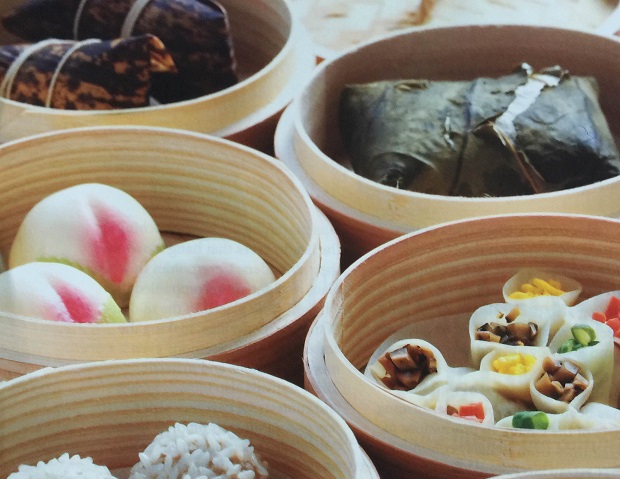Delicate and Delicious Dim Sum

The Chinese tradition of dim sum has taken on many variations, offering gourments a limitless culinary journey.
Dim sum (literally, “touch your heart”) traces its roots back to the snacks eaten during relaxing tea sessions lyum cha) in ancient China. In the the areas around Guangdong, in Southern China emphasis gradually shifted from tea to these elegant little foods, and one of the world’smost delicious culinary traditions was formed.
The varieties of dim sum found around Guangzhou alone runs into the hundreds. Har gow dumplings feature a thin and translucent shell wrapped around a shrimp filling. Delicate shu mai dumplings are traditionally filled with a delicious blend of prawns pork and mushrooms, and topped with red crab roe appearing almost like a flower blossom. Chee Cheong fun or Chinese crepes made of rice powder and cassava powder are chewy and seem to melt right on your tongue, filled with beef, cha siu (barbecue pork), prawns or scallops under a layer of delicious sauce.
Phoenix Claw – An imaginatively named dim sum fare
For a crunchier taste, deep-fried chicken legs, which are marinated in black beans and then steamed are a favorite choice. Another delectable meat dish is pai gwat tender pork ribs steamed in black bean sauce. If you want something to truly fill the stomach, order cha situ bao, buns th barbecued pork. These come in two varieties, a fluffy steamed version and a baked version that is glazed and browned. Another filling treat is sticky rice wrapped in tus leaves full of chicken, Chinese sausage, mushrooms and salted eggs, infused with a tantalizing lotus fragrance.
Ready for dessert? Try some jin deui (sesame pancakes) or douhua, very soft tofu with lotus seeds or longans served ith a sweet syrup. There are also mai la go, a unique sweet steamed sponge cake.